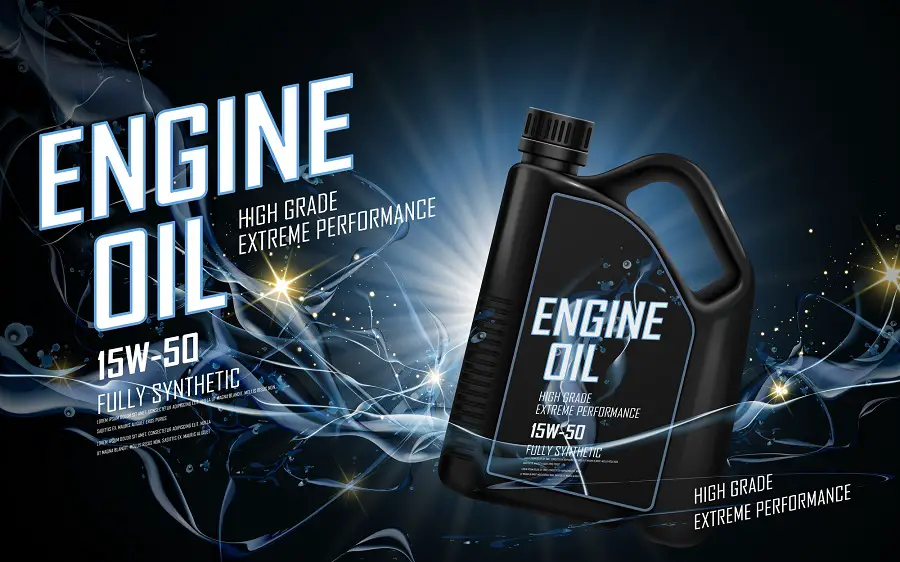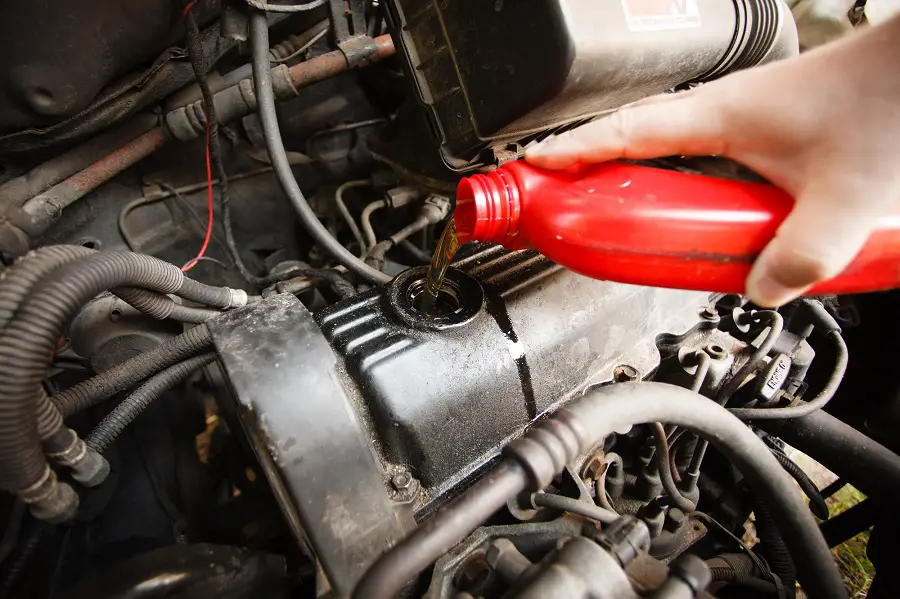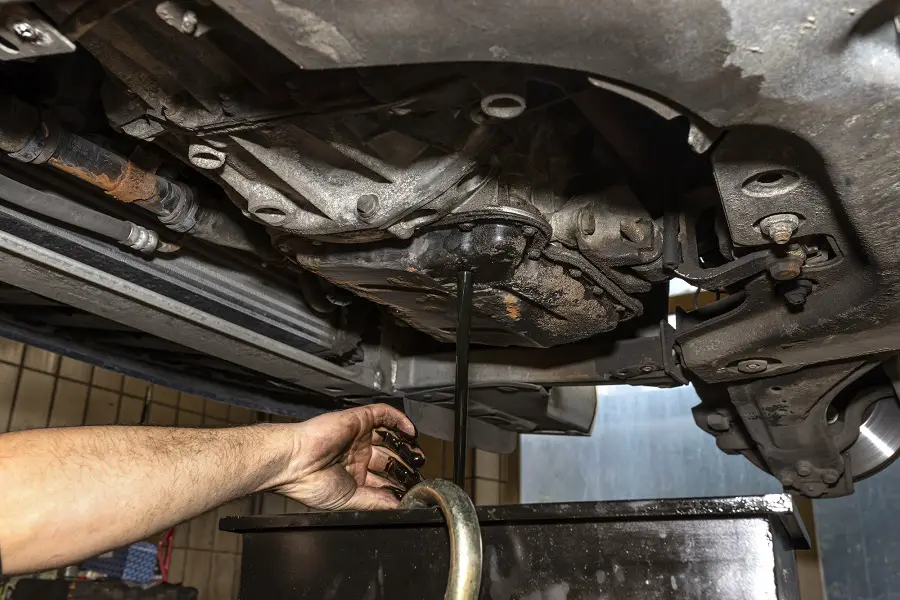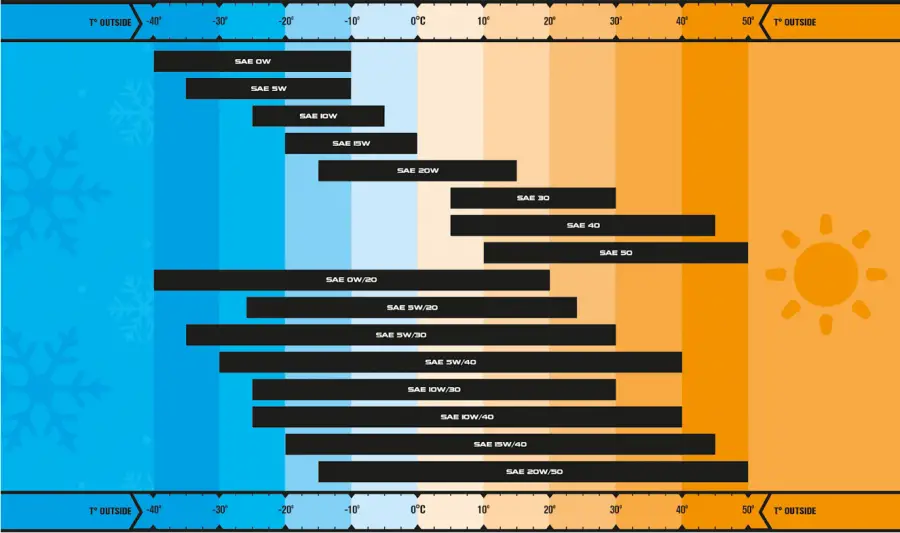It seems like vehicle manufacturers are picking random colors of coolant and antifreeze to put in their cars. You have green, orange, pink, red and blue coolant circulating through radiator hoses in cars around the world.
Because of all this variety, it’s important that you don’t mix the wrong coolant, or wrong types of coolant mixtures, the next time you’re topping off your coolant level.
You might be wondering if it’s possible to mix coolant brands? Perhaps there are instances when you find yourself buying different coolant brands but are unsure if this is safe for your engine?
Don’t fret. You’re not the only motorist feeling like that. There are plenty of drivers like you. I once also found myself in the same situation. Hence, I decided to put together this article to shed some light on this.
The short answer is that you can mix different coolant brands and mixtures as long as they are the same type of coolant. The color doesn’t matter as much since it’s just a dye. But it’s best to match that as well – because each coolant has special additive packages that help with corrosion, performance and coolant flow.
This blog will take a closer look at coolant brands and tell you if it’s safe to mix different coolant brands. But before we do first things first:
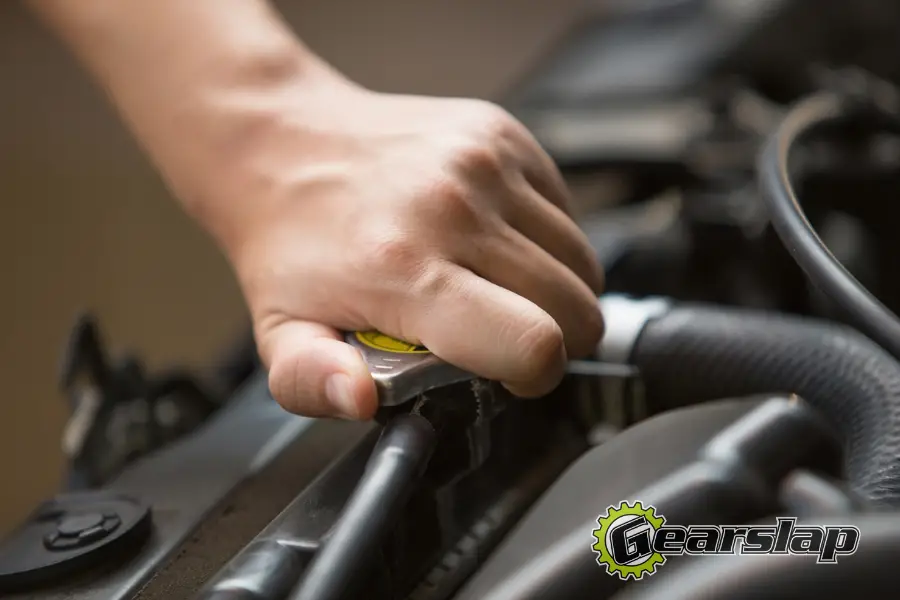
How do coolants differ?
We recently wrote about mixing windshield washer fluid. With washer fluid, it almost doesn’t matter what gets mixed with which. But that’s exactly the opposite when it comes to mixing one type of coolant with another.
Just because you have a green coolant in a jug at home, it doesn’t mean you can always add it to your radiator and mix it with the existing antifreeze in your coolant reservoir.
With antifreeze & coolant, there is a wrong coolant and a right coolant depending on the application, brand of vehicle and where you live.
Three types of coolants that you should know:
- Typical coolants you’re likely to find in the market contain Inorganic Acid Technology (IAG), suitable for an old car. They have properties like phosphates (used as a corrosion inhibitor) and silicates. They are available in green (most common), red or orange color.
- Then there is Organic Acid Technology (OAT), suitable for new cars. Unlike IAG, they don’t contain any silicates or phosphates but azoles and neutralized organic acids. It is also available in orange, yellow, red and purple. OAT coolants offer the same protection as “normal” green antifreeze but are usually better in newer vehicle applications.
- Lastly, you will find Hybrid Organic Acid Technology (HOAT), a mixture of the above coolants. What’s good about it is that it has a lifespan of up to 5 years.
What are the primary ingredients in coolant or antifreeze?
In most coolants, the primary ingredients that you will find are either ethylene glycol (EG) or less toxic propylene glycol (PG).
EG is an organic compound that contains antifreeze formulations.
On the other hand, PG is a commonly used compound for oral, intravenous, topical pharmaceutical preparations or inhibitors.
Another substance in a coolant or antifreeze brand is a pH buffer responsible for maintaining the alkalinity of the solution and anti-corrosive compounds that prevent the wearing out of your engine.
The most common antifreeze out there is Ethylene Glycol for older vehicles and is usually green.
What do the ratios mean?
I’m sure you’ve seen the 30:70 or 50:50 ratios and wondering what they mean? Don’t sweat it. Ratios related to coolants and antifreeze are some of those things that most motorists find mind-boggling at first.
But, once someone explains them to you, you will learn that they are pretty straightforward.
Typically, a coolant will be a 50-50 mix of antifreeze and water, although it’s not uncommon to find a 30-70 mix too.
For example, the 30:70 ratio means 30% antifreeze and 70% water, working well for moderate climates. In contrast, the 50:50 ratio is optimized for almost every climate. If you live in a country or state where temperatures drop below 0℃ for a more extended period, then you’ll need 60% antifreeze and 40% water.
These ratios are often referred to as “mixtures.” We have a great article on how to check your fluid and check your anti-freeze ratios.
What do the colors mean?
Coolant and antifreeze are available in different colors, from red, pink, orange, blue, yellow, and green. When it comes to antifreeze or coolant, you should know this: the color determines its chemical makeup.
The different colors may also mean each antifreeze or coolant has other properties of the liquid. For instance, orange and green antifreeze will keep your engine from freezing or overheating. Green engine coolants are perfect for pre-2000 models, older cars containing multiple steel and copper components. But you can use orange on those cars too.
So, before buying a coolant brand, you need to know which color will be suitable for your car. Consult your manual, the manufacturer of your vehicle should specify their preferred coolant brand.
Can you mix different coolant brands or mixtures?
These are two separate questions so we’ll address them that way. You have the question of mixtures (or dilution ratios and also the question regarding different brands of coolants.
Brands like Peak, Zerex, Dexcool or Prestone.
These BRANDS will produce multiple different types, mixtures (60:40, 70:30, 50:50, etc.) and chemical compounds (HOAT, OAG or IAG) for a whole range of vehicles and applications (UTV, RV, Automotive, Low Temp, Racing, etc.)
So it’s important to clear up a few things when it comes to mixing coolant.
Can you mix different antifreeze or coolant brands?
Now that I’ve shed some light on what goes into coolants, let’s address the elephant in the room: Can you mix different brands?
The answer to that is Yes. You can mix Peak with Zerek or Prestone – but only as long as the coolant is the same chemical type. The ratio doesn’t matter as much, but the type & application should match.
The easiest way to remember is that you should try and match type – IAG with IAG, OAG with OAG and HOAT with HOAT.
However, like with everything, it’s qualified and depends on getting things to match as best you can. Mixing different antifreeze or coolant brands may lessen corrosive properties and put your engine at risk.
There will be instances where you have no choice but to use different antifreeze or coolant brands. Like when you go to a gas station or hardware store but find out the brand you usually use is out of stock.
If you find yourself in that situation, the safest thing you should do is drain the old coolant out, then replace it with a coolant or antifreeze brand that you can find.
But if you’re in a pinch, you can use the closest match – especially if it’s temporary.
Can you mix different coolant Mixtures?
As you adjust the ratios to more or less water, you change the properties of the coolant/antifreeze. If you’re adding fluid during the winter, you’ll want to keep as high of an antifreeze ratio as you can. But, as long as you match the types of antifreeze, it’s okay to mix different mixtures.
As mentioned above, the optimal mixture for most locations is 50:50. Which represents 50% water and 50% antifreeze.
This mixture will provide great cooling properties as water evaporates and cools faster than a lot of products. This helps when things get warm.
In cooler weather, water freezes more quickly (at 32 degrees Fahrenheit), so this is where the antifreeze compounds kick in and do their work. They can protect the fluid from freezing to -100 degrees in some mixtures.
Just be aware that you can dilute your antifreeze by adding different mixes or straight water (distilled is best) to your reservoir.
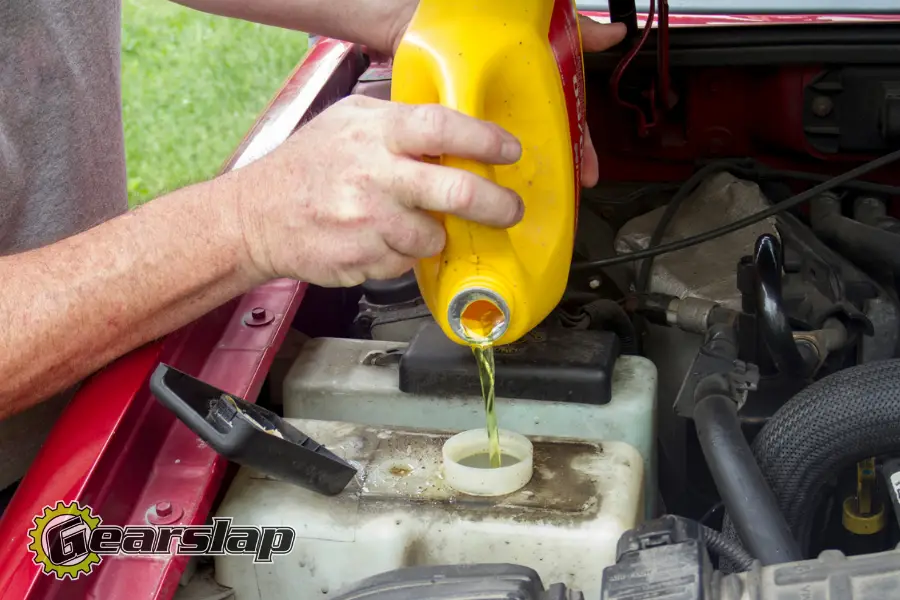
What about mixing different types of coolant?
Never make the mistake of mixing up different types of coolants unless you are a chemistry expert or clued-up about the chemical composition of each coolant brand.
Why? Because if you mix two different types of coolants, they might create a thick substance that will eventually affect the performance of your engine in two ways:
- First, those coolants may create a jelly-like substance that will cause your engine to overheat.
- Or even worse – blow the gasket, water pump, and other things.
Only use a coolant brand recommended by your car manufacturer to be on the safe side. Or at least when there is an emergency. Other than that, it would help if you avoided coolant brands at all costs.
Remember, any engine coolant that you use should do more than reduce the heat in your engine. At its best, an excellent coolant should prevent corrosion in your machine.
What if you mix the wrong engine coolant – What do you do?
If you find that you’ve mixed two incompatible types of coolant in your car it’s best to perform a coolant flush and replace it with the proper type, mixture and brand for your car. Because the cooling systems on most modern vehicles have such narrow tolerances, it’s important that you match the vehicle manufacturers’ specs.
Performing a coolant flush can help you avoid the thick, jelly-like substance that can form if you mix the wrong types of coolant – which would lead to a very costly repair (and, the resulting gel-like substances aren’t good for anything anyway).
As a rule of thumb, you should regularly change your antifreeze and coolant. The same way you do with oil, air and washer fluid. If the coolant looks rusty, it means one thing: “Change me now!” You don’t want your beloved car (let’s call her “Old Blue”) getting mad at you for neglecting her. [by the way, you should check out our huge list of names for your car/ Jeep]
If you’ve been stressing about the question of mixing different antifreeze, we hope that we were able to answer your questions and help you cool off a bit!



